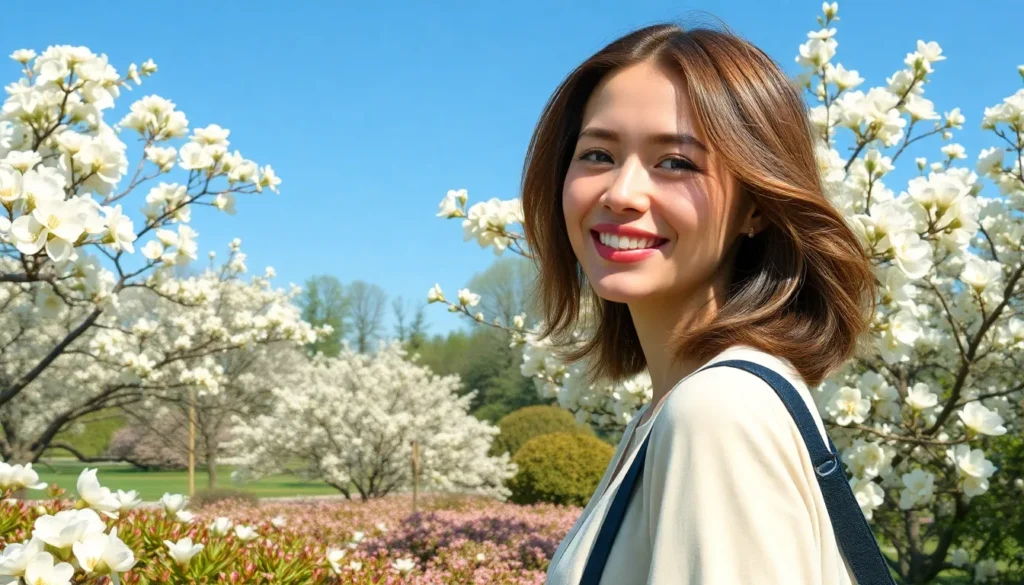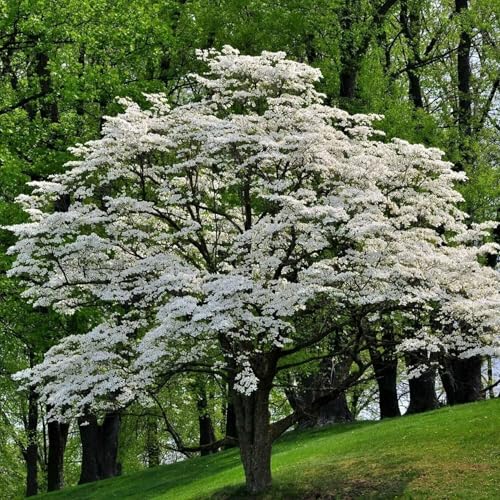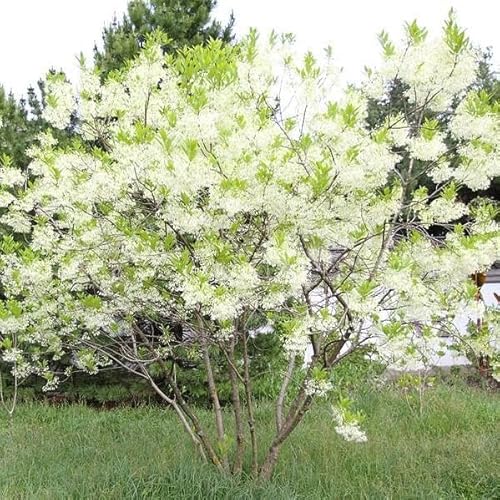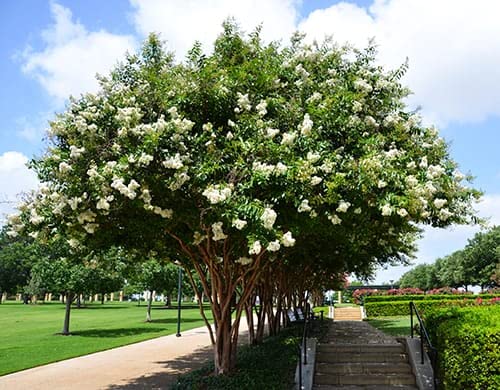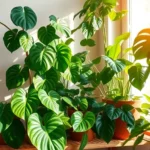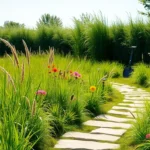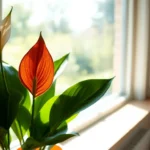We’ve all experienced that magical moment when white flowering trees burst into bloom transforming our landscapes into breathtaking winter wonderlands or spring spectacles. These stunning trees don’t just add visual appeal to our gardens – they create focal points that capture attention year-round and boost our property values significantly.
White flowering trees offer incredible versatility for any industry design. Whether we’re looking for early spring bloomers like Bradford pears or dramatic summer showstoppers like Southern magnolias these trees deliver consistent beauty that complements any architectural style. They’re perfect for creating striking contrasts against darker foliage and structures.
What makes white flowering trees even more appealing is their relatively low maintenance requirements compared to other ornamental options. Most varieties adapt well to various soil conditions and climate zones making them ideal choices for both novice and experienced gardeners who want maximum impact with minimal effort.
Beautiful White Flowering Trees That Transform Your Landscape
We’ll explore three exceptional white flowering trees that deliver maximum visual impact with minimal maintenance requirements.
Dogwood Trees: Classic American Beauty
Flowering dogwoods (Cornus florida) create stunning spring displays with their distinctive four-petaled white bracts that span 3 to 5 inches across. These native American trees reach mature heights of 15 to 30 feet and spread equally wide, making them perfect for medium-sized landscapes.
Spring blooming occurs from March to May depending on your climate zone, with flowers appearing before the leaves emerge for maximum dramatic effect. We love how dogwoods provide year-round interest through their distinctive layered branching pattern and vibrant red fall foliage.
Growing conditions favor partial shade locations with well-draining, slightly acidic soil that stays consistently moist. These trees thrive in USDA zones 5 through 9 and require minimal pruning once established.
Magnolia Trees: Southern Elegance
Southern magnolias (Magnolia grandiflora) produce massive 8 to 12 inch white blooms that fill gardens with their signature lemony fragrance from late spring through summer. These evergreen giants can reach 60 to 80 feet tall and 30 to 50 feet wide at maturity.
Star magnolias (Magnolia stellata) offer compact alternatives for smaller spaces, growing only 15 to 20 feet tall with delicate star-shaped white flowers in early spring. We recommend these varieties for northern climates since they’re hardy in zones 4 through 8.
Planting requirements include full sun to partial shade with rich, slightly acidic soil that drains well but retains moisture. Magnolias develop extensive surface root systems, so we suggest avoiding cultivation around the base once established.
Cherry Blossom Trees: Springtime Spectacle
Yoshino cherry trees (Prunus x yedoensis) deliver breathtaking white to pale pink flower clouds that completely cover their branches for 7 to 10 days in early spring. These fast-growing trees reach 25 to 35 feet tall and spread 25 to 30 feet wide.
Flowering timing typically occurs from late March to early April in most regions, creating stunning temporary displays that signal winter’s end. We appreciate how these trees provide excellent fall color with golden yellow to orange red leaves.
Site selection should prioritize full sun exposure with well-draining soil that’s slightly acidic to neutral. Cherry trees perform best in USDA zones 5 through 8 and benefit from regular watering during dry periods, especially when young.
Best White Flowering Trees for Small Gardens
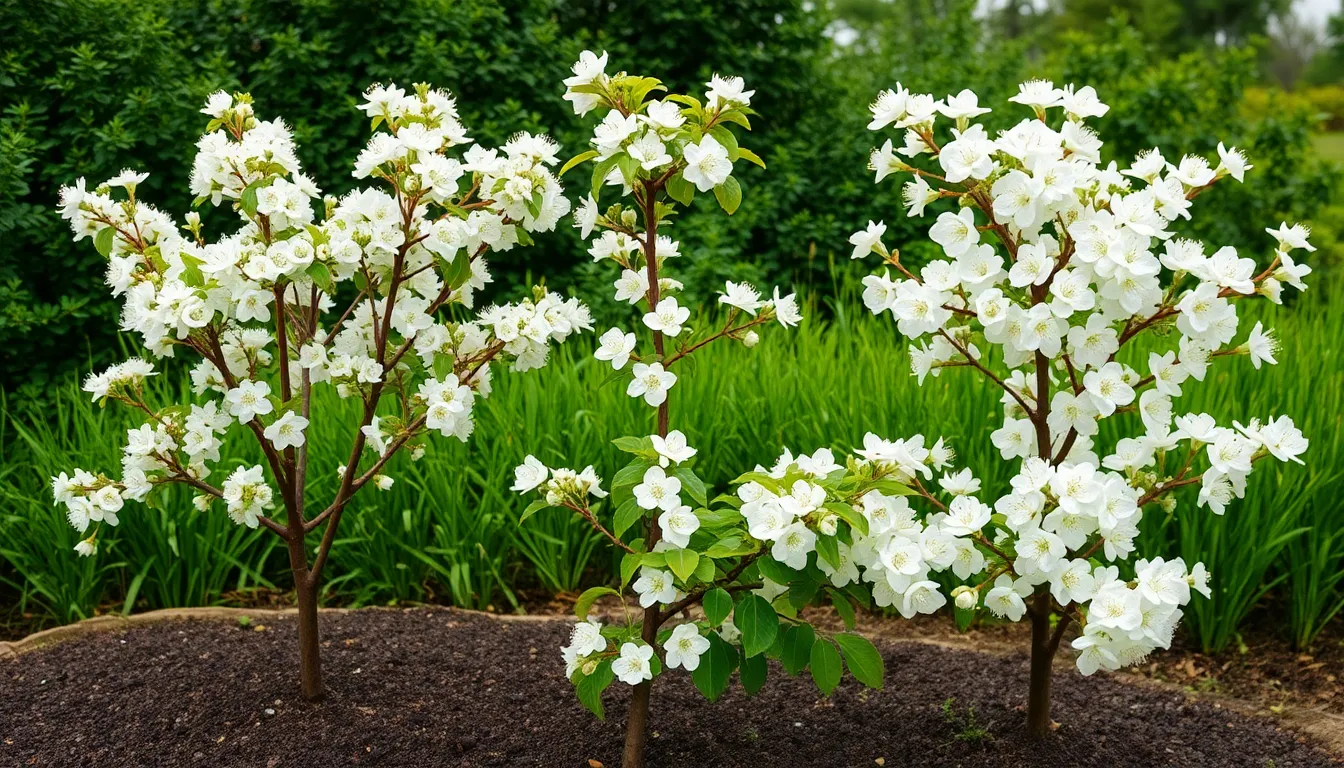
Choosing the right white flowering trees for compact spaces requires careful consideration of mature size and growth habits. We’ve selected three exceptional varieties that deliver maximum impact while fitting perfectly in smaller garden settings.
Serviceberry Trees: Compact and Colorful
Serviceberry trees offer exceptional value in small gardens, typically reaching heights of only 15-25 feet at maturity. Early spring brings masses of delicate white flowers that create stunning displays before the leaves fully emerge. These compact trees provide year-round interest with edible berries following the blooms and vibrant fall colors ranging from orange to deep red.
Multiple benefits make serviceberries ideal for small spaces. Wildlife enjoys the nutritious berries, while gardeners appreciate the low-maintenance nature of these native trees. Varieties like Amelanchier canadensis and Amelanchier x grandiflora adapt well to various soil conditions and partial shade locations.
Redbud Trees: Heart-Shaped Leaves and Delicate Blooms
Redbud trees bring unique charm to small gardens with their distinctive heart-shaped leaves and manageable size. While most varieties produce pink to purple flowers, the ‘Alba’ cultivar offers pure white blooms that appear directly on branches before leaves emerge. These trees typically reach 20-30 feet tall, making them suitable for compact landscapes.
Heart-shaped foliage creates beautiful texture throughout the growing season. Fall brings golden yellow colors that complement the tree’s graceful, spreading form. Eastern redbuds (Cercis canadensis) thrive in USDA zones 4-9 and tolerate various soil conditions, including clay and alkaline soils.
Crabapple Trees: Ornamental and Fragrant
Crabapple trees provide spectacular white flowering displays with intense fragrance that fills small gardens during spring blooms. Compact varieties like ‘Sugar Tyme’ and ‘Spring Snow’ stay under 20 feet tall while producing abundant white flowers. These ornamental trees offer extended seasonal interest with colorful fruit that persists into winter.
Disease-resistant cultivars require minimal care while delivering maximum visual impact. Fragrant blossoms attract beneficial pollinators, supporting garden ecosystems. Many crabapple varieties feature attractive bark and branching patterns that provide winter interest long after flowers and fruit have finished their show.
Large White Flowering Trees for Spacious Yards
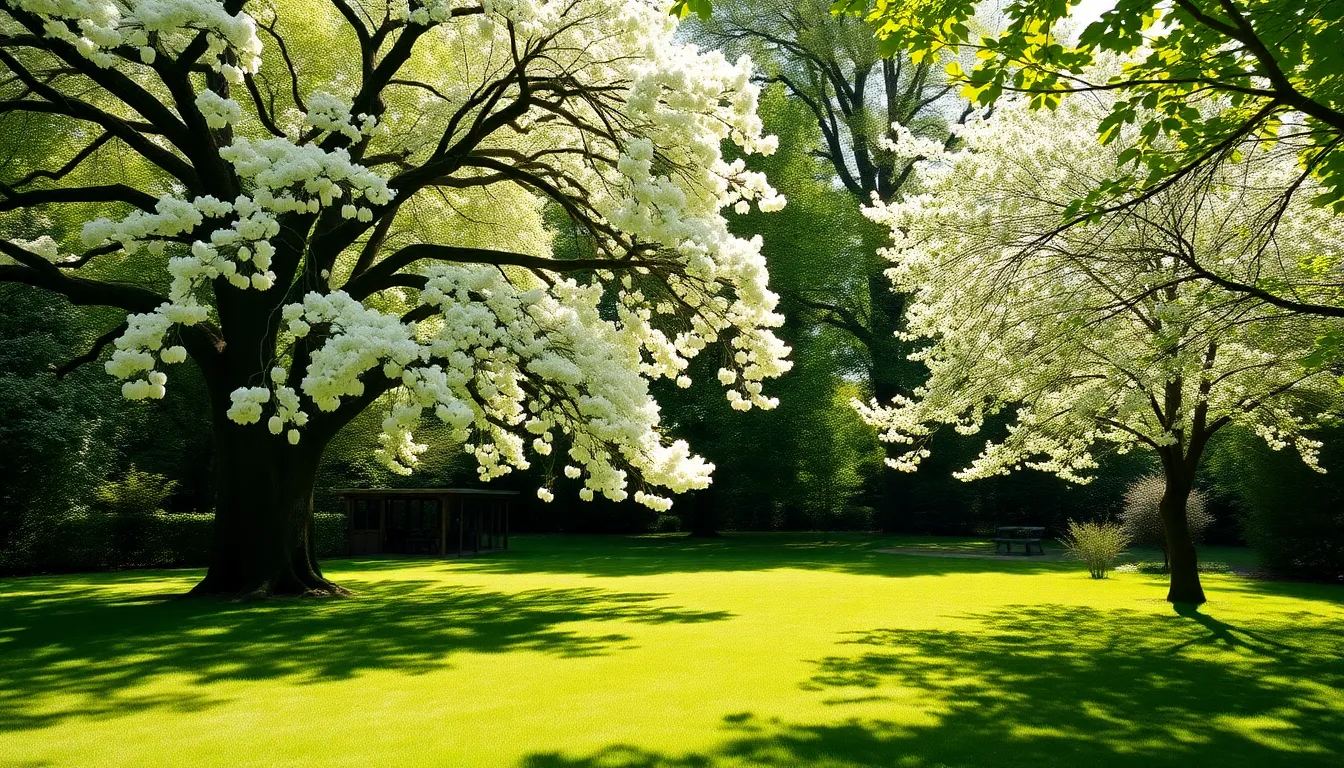
When you’ve got room to spare, these magnificent white flowering trees make breathtaking centerpieces that’ll transform your expansive industry into a stunning showcase.
Tulip Trees: Towering Giants with Unique Blooms
Tulip trees dominate large landscapes with their impressive stature, reaching heights of 70 to 90 feet and sometimes stretching up to 120 feet tall. These rapid growers produce distinctive cup shaped flowers adorned with green and yellow markings that appear brilliantly white from a distance. Blooming occurs during late spring to early summer, creating a spectacular canopy display that’s visible throughout your entire yard.
We particularly love how tulip trees provide excellent shade coverage for expansive backyards while maintaining their ornamental appeal. Their tall canopy structure makes them perfect for creating natural outdoor rooms beneath their branches. Growing conditions remain relatively simple, as these trees adapt well to various soil types and thrive in both full sun and partial shade locations.
American Linden Trees: Fragrant Summer Flowers
American linden trees offer generous proportions at 60 to 80 feet tall, making them ideal specimen trees for large properties. Clusters of small, creamy white flowers release an enchanting fragrance that fills the summer air during early to mid summer blooming periods. These attractive flowering displays not only provide visual beauty but also serve as magnets for beneficial pollinators like bees and butterflies.
We appreciate how American linden trees combine ornamental value with practical benefits, creating substantial shade areas perfect for outdoor entertaining. Their attractive foliage remains lush throughout the growing season, providing consistent visual interest even after the blooming period ends. Maintenance requirements stay minimal once established, making them excellent choices for homeowners seeking low effort, high impact landscaping answers.
Black Locust Trees: Cascading Flower Clusters
Black locust trees typically reach heights of 30 to 80 feet, offering flexibility for various industry scales and design preferences. Long, hanging clusters of fragrant white flowers create dramatic vertical displays during late spring blooming seasons. These fast growing trees demonstrate excellent drought resistance, making them practical choices for regions with water restrictions or naturally dry conditions.
We recommend black locust trees for their dual purpose benefits, as they’re commonly used for reclamation projects and windbreak applications while providing ornamental value. But, we advise checking local regulations since these trees can become invasive in certain areas. Their rapid growth rate means you’ll enjoy mature flowering displays relatively quickly compared to slower growing alternatives.
Fast-Growing White Flowering Trees for Quick Results
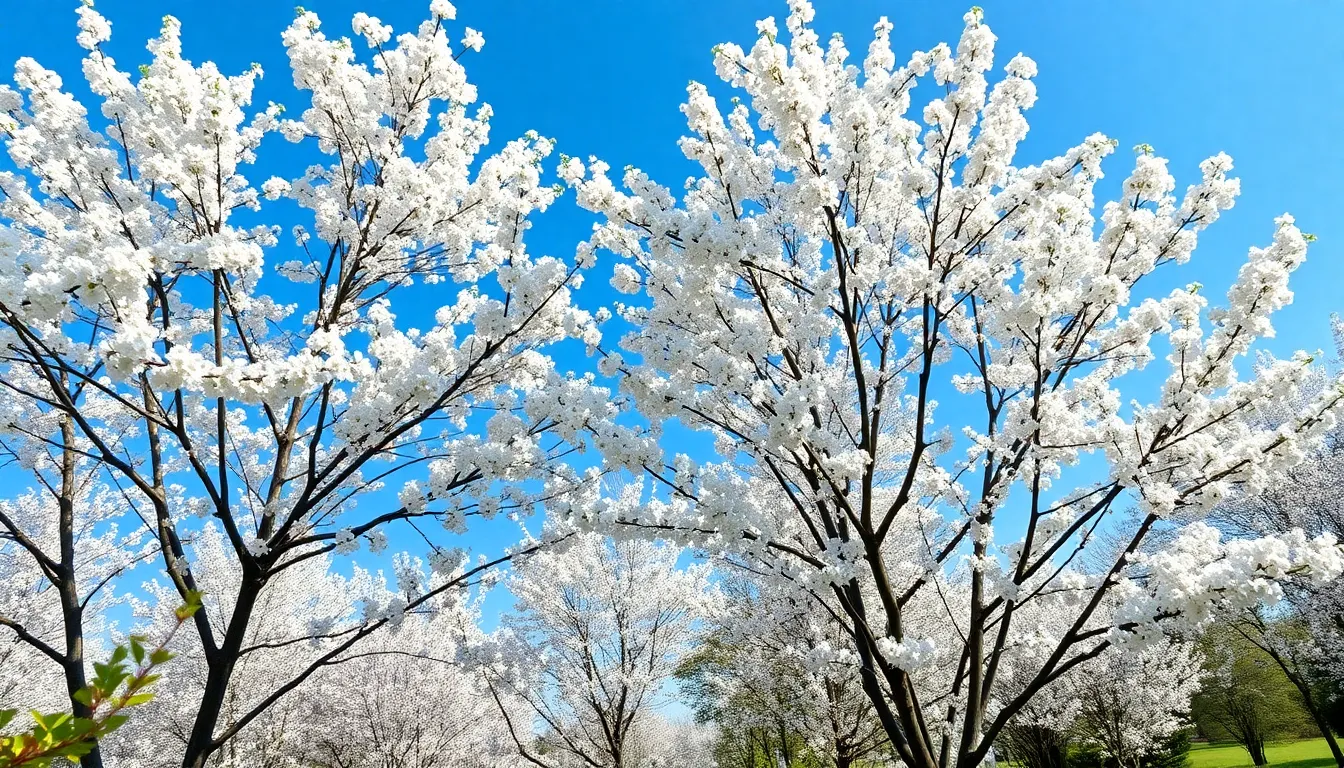
When we need immediate impact in our landscapes, selecting fast-growing white flowering varieties delivers the stunning displays we’re seeking without the lengthy wait times of slower-growing specimens.
Bradford Pear Trees: Rapid Spring Display
Bradford pear trees (Pyrus calleryana ‘Bradford’) create spectacular white flower displays that arrive remarkably early in spring. These trees are frequently chosen for landscaping projects because they produce their showy blooms so quickly after planting. But, we must consider their important drawbacks before adding them to our gardens.
Wind and ice damage poses serious risks to Bradford pears due to their weak branch structure. Their invasive growth patterns can overwhelm native plant communities in many regions. Many landscaping professionals now recommend avoiding these trees even though their attractive rapid spring flowering display.
Silver Maple Trees: Quick Shade and Subtle Blooms
Silver maple trees (Acer saccharinum) excel at providing fast-growing shade while offering delicate white blooms in early spring. We appreciate these trees primarily for their incredible growth rate rather than their flowering display. Their subtle white flowers appear before the leaves emerge, creating a gentle springtime show.
Quick establishment makes silver maples popular choices for homeowners seeking immediate shade coverage. Large leaves can create maintenance challenges as they drop throughout the growing season. These trees adapt well to various soil conditions and tolerate urban environments effectively.
Poplar Trees: Tall Growth with Catkin Flowers
Poplar trees (Populus spp.) deliver exceptional height growth rates while producing distinctive white catkin flowers. We value these trees more for their rapid vertical growth than their flowering characteristics. Their white catkins appear in early spring before leaf emergence, creating interesting textural displays.
Rapid growth allows poplars to reach impressive heights in just a few growing seasons. Some poplar varieties can become invasive in certain regions, requiring careful consideration before planting. Height and shade provision remain their primary industry benefits, with the white catkin flowers serving as an attractive seasonal bonus.
White Flowering Trees That Attract Wildlife
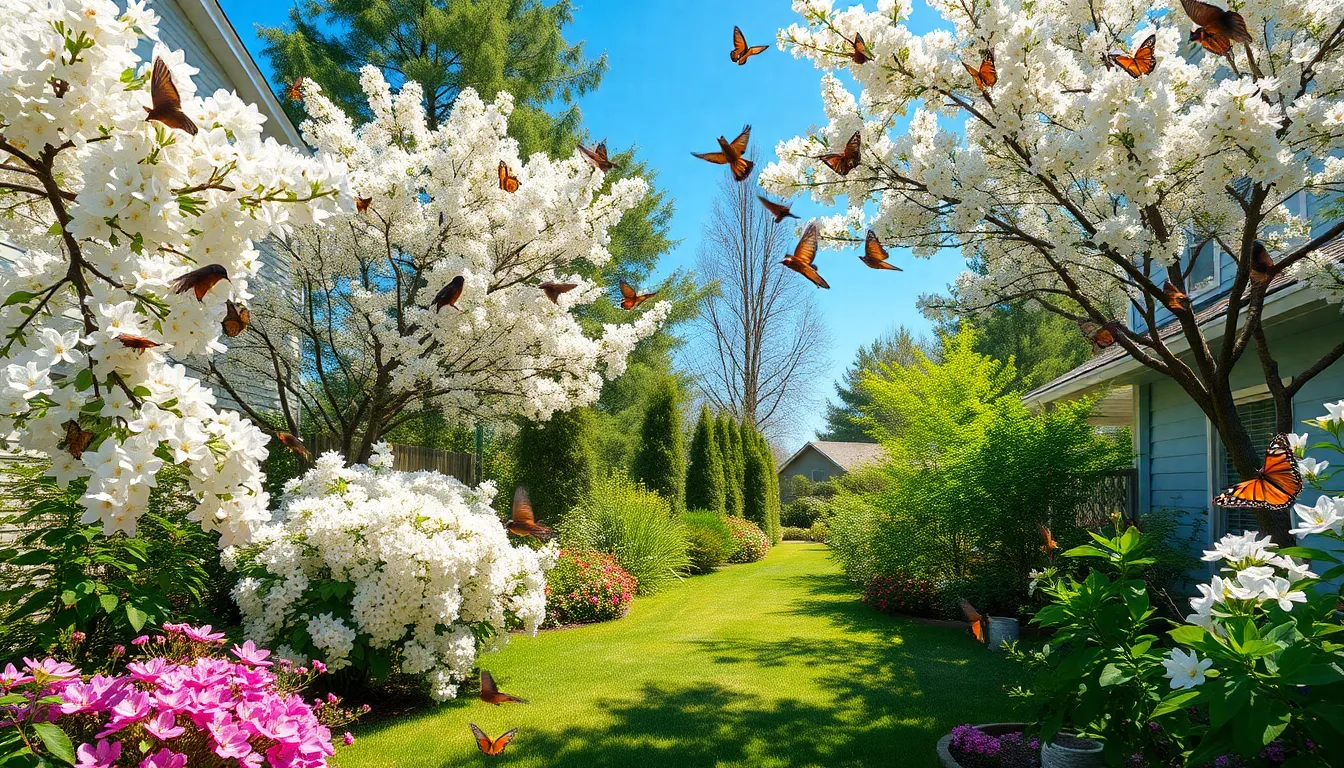
Beyond their stunning visual appeal, white flowering trees serve as vital resources for local wildlife ecosystems. These beautiful specimens create natural feeding stations and habitat areas that support various birds, butterflies, bees, and other beneficial creatures throughout multiple seasons.
Hawthorn Trees: Bird-Friendly Berries
Hawthorn trees offer exceptional value for wildlife enthusiasts seeking to create bird-friendly landscapes. These adaptable trees produce clusters of small berries that serve as crucial food sources for many bird species throughout fall and winter months.
Versatility makes hawthorn trees suitable for various garden conditions, as they adapt well to different soil types and environmental challenges. Wildlife benefits extend beyond just feeding birds, as the dense branching structure provides excellent nesting sites and protective shelter. Seasonal interest continues year-round, with spring flowers giving way to colorful berries that persist well into winter.
Most hawthorn varieties require minimal maintenance once established, making them ideal choices for gardeners wanting maximum wildlife impact with minimal effort. These hardy trees typically reach heights of 15 to 30 feet, fitting comfortably in most residential landscapes.
Elder Trees: Butterfly and Bee Magnets
Elder trees function as powerful attractors for pollinators, particularly butterflies and bees that seek their abundant nectar sources. These remarkable trees produce flat-topped clusters of small white flowers that create landing platforms perfect for various pollinating insects.
Pollinator appeal stems from the trees’ ability to bloom when many other food sources aren’t available, providing critical early season nutrition. Habitat creation occurs naturally as elder trees develop into multi-stemmed shrubs or small trees that offer shelter and nesting opportunities. Berry production follows the flowering period, attracting additional wildlife species that feed on the dark purple fruit clusters.
Elder trees thrive in moist to wet environments with well-draining soils, preferring locations that receive partial shade to full sun exposure. Their preference for consistently moist conditions makes them excellent choices for rain gardens or areas with natural water features.
Mountain Ash Trees: Wildlife Food Source
Mountain Ash trees stand out as exceptional wildlife food sources, producing brilliant clusters of berries that attract birds and small mammals throughout autumn months. These striking trees combine ornamental beauty with practical wildlife benefits, making them valuable additions to nature-focused landscapes.
Berry clusters develop in large, showy groups that create visual interest while providing abundant food for wildlife species like cedar waxwings, robins, and squirrels. Seasonal timing proves perfect for supporting wildlife during migration periods and winter preparation phases. Tree structure offers excellent perching and nesting opportunities with its sturdy branching pattern and moderate size.
Mountain Ash trees prefer well-draining soils and locations with full sun to partial shade exposure. These trees typically reach heights of 25 to 35 feet, creating substantial wildlife resources without overwhelming smaller garden spaces. Their tolerance for various soil conditions makes them adaptable to most residential settings where wildlife support is desired.
Low-Maintenance White Flowering Trees
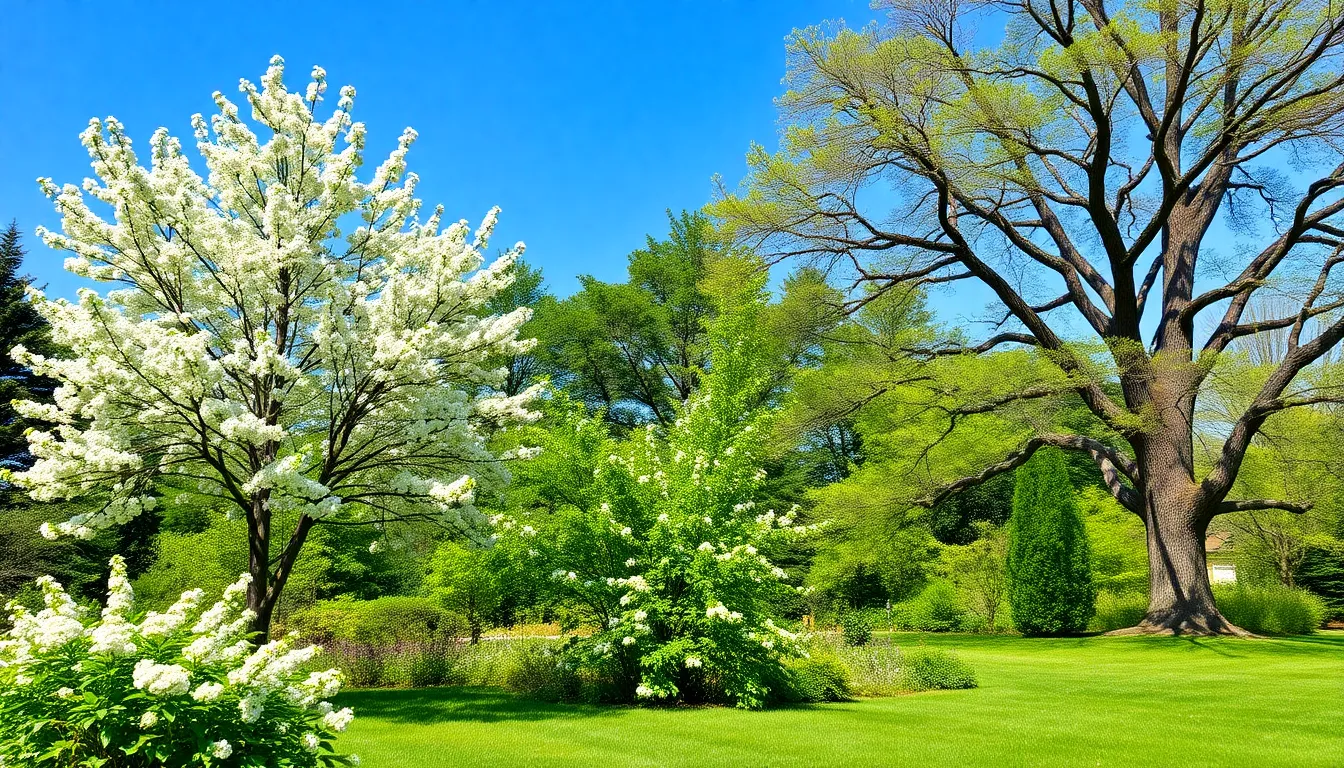
We’ve explored various options for adding stunning white blooms to landscapes, and now we’ll focus on trees that deliver exceptional beauty with minimal upkeep requirements.
Eastern Redbud Trees: Drought-Tolerant Beauty
Eastern Redbud trees offer unique versatility with select varieties producing pristine white blooms instead of their traditional pink and purple flowers. We recommend these trees for gardeners seeking low maintenance options that can handle varying moisture conditions. Once established, Eastern Redbuds tolerate drought conditions effectively while preferring moist soil for optimal growth.
Benefits include:
- Exceptional drought tolerance after establishment
- Heart-shaped leaves providing year-round visual interest
- Compact growth suitable for various industry sizes
- Early spring blooming period creating stunning displays
Honey Locust Trees: Minimal Care Required
Honey Locust trees stand out for their remarkably low maintenance requirements and thornless varieties that eliminate safety concerns. We appreciate these trees for their adaptability and minimal care needs, though they typically produce yellow or greenish flowers rather than pure white blooms. Their resilience makes them excellent choices for busy homeowners seeking attractive trees without extensive maintenance commitments.
Key features include:
- Thornless varieties available for safer landscaping
- Exceptional tolerance to urban conditions
- Minimal pruning and care requirements
- Fast growth rates for quick industry impact
White Oak Trees: Long-Lasting and Hardy
White Oak trees provide unmatched longevity and strength, with many specimens living for centuries in optimal conditions. We value these trees for their incredible durability rather than showy white flowers, as they’re primarily known for their distinctive acorns and robust structure. Their exceptional hardiness makes them ideal anchor trees for landscapes requiring minimal intervention over decades.
- Century-long lifespans with proper care
- Superior strength and wind resistance
- Minimal maintenance once established
- Excellent shade coverage for large properties
Seasonal Care Tips for White Flowering Trees
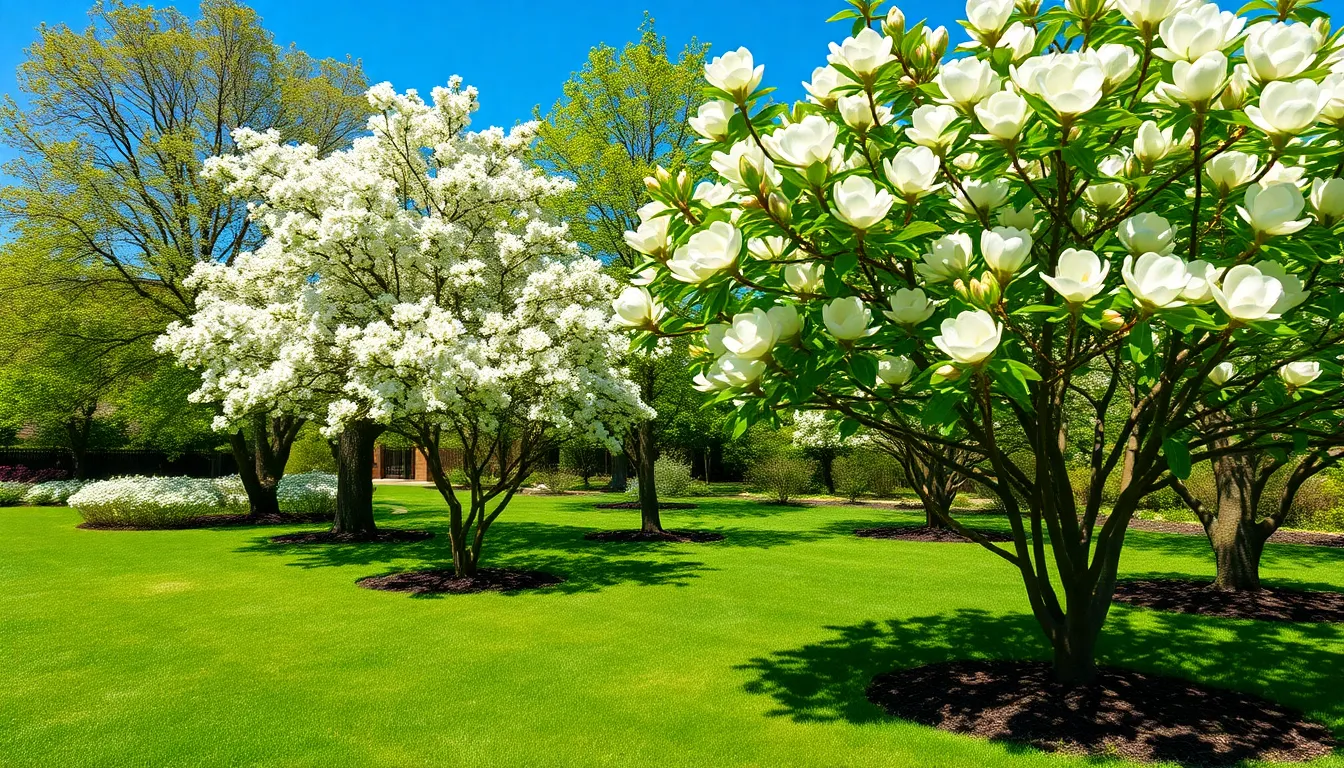
Proper seasonal care ensures your white flowering trees thrive throughout the year and produce their most spectacular blooms. Following these targeted maintenance practices helps establish healthy root systems and maximizes flowering potential.
Spring Planting and Pruning Guidelines
Plant your white flowering trees during spring months to give them the best chance at establishing strong root systems before summer heat arrives. Most varieties like flowering dogwoods and Southern magnolias benefit from spring planting because it allows adequate time for root development.
Prune trees in late winter or early spring before new growth begins to promote healthy branching patterns. Remove dead or damaged branches first, then focus on shaping the canopy for optimal light penetration. Timing this pruning correctly prevents stress on the tree during active growing seasons.
Schedule major pruning between February and March in most climates to avoid interfering with flower bud formation. Bradford pears and Yoshino cherry trees respond particularly well to early spring pruning when their energy reserves are highest.
Summer Watering and Fertilization
Water newly planted trees regularly during their first growing season to establish robust root networks that support future flowering. Consistent moisture helps trees like star magnolias and serviceberry trees develop the foundation they need for spectacular spring displays.
Maintain steady soil moisture throughout summer months especially during dry periods when established trees still benefit from supplemental watering. Deep, infrequent watering encourages roots to grow deeper rather than staying shallow near the surface.
Apply balanced, slow release fertilizer in early spring to encourage healthy growth and maximize bloom production throughout the season. Trees like redbud and crabapple varieties respond well to fertilization that provides nutrients gradually over several months.
Fertilize before active growth begins to ensure nutrients are available when trees need them most for flower and leaf development. Avoid late season fertilizing that can stimulate growth vulnerable to frost damage.
Fall Preparation and Winter Protection
Prepare soil drainage systems during fall months to prevent root rot that commonly affects white flowering trees in poorly draining conditions. Adding organic matter like compost improves soil structure for trees like tulip trees and American linden.
Apply mulch around tree bases to retain soil moisture and protect root systems from temperature fluctuations during winter. Maintain mulch layers 2 to 3 inches deep while keeping material several inches away from trunk bases.
Protect young trees from frost damage in colder climates by covering them or applying anti desiccant sprays before severe weather arrives. Mountain ash and hawthorn trees particularly benefit from winter protection during their first few years.
Continue moisture maintenance through winter to prevent root damage from drying out when trees cannot actively absorb water. Even dormant trees need consistent soil moisture to survive harsh winter conditions successfully.
Conclusion
White flowering trees offer us an unmatched combination of natural beauty and practical benefits that make them essential elements in any thoughtful industry design. We’ve explored how these remarkable specimens can transform ordinary yards into extraordinary outdoor spaces while requiring minimal effort from homeowners.
Whether we’re working with compact urban gardens or expansive rural properties there’s a white flowering tree perfectly suited to our exact needs and growing conditions. From the delicate early spring blooms of cherry trees to the majestic summer displays of magnolias each variety brings its own unique character to our outdoor environments.
The ecological benefits these trees provide extend far beyond their visual appeal as they create vital habitat for local wildlife and support healthy network development. By choosing white flowering trees we’re making an investment that rewards us with years of stunning seasonal displays while contributing positively to our local environment.
Frequently Asked Questions
What are the main benefits of planting white flowering trees?
White flowering trees offer multiple advantages including enhanced visual appeal, increased property values, and versatile landscaping options. They create stunning focal points during blooming seasons, complement various architectural styles, and provide year-round interest. Additionally, most white flowering trees are low-maintenance, making them perfect for both novice and experienced gardeners seeking impactful yet easy-to-care-for landscape additions.
Which white flowering trees are best for small gardens?
For compact spaces, consider serviceberry trees (15-25 feet), redbud trees with ‘Alba’ cultivar (20-30 feet), and crabapple varieties like ‘Sugar Tyme’ and ‘Spring Snow’ (under 20 feet). These trees offer maximum visual impact while fitting smaller garden settings. They provide early spring blooms, attractive foliage, and additional features like edible berries or vibrant fall colors.
What are the best large white flowering trees for spacious yards?
For expansive landscapes, tulip trees (70-90 feet), American linden trees (60-80 feet), and black locust trees (30-80 feet) make excellent centerpieces. These trees provide breathtaking displays with their massive blooms, excellent shade coverage, and fragrant flowers. They’re low-maintenance options that create dramatic focal points in larger garden settings while attracting pollinators.
Which white flowering trees grow fastest for immediate impact?
Bradford pear trees, silver maple trees, and poplar trees are among the fastest-growing options for quick landscaping results. Bradford pears offer spectacular early spring displays, silver maples provide rapid shade with subtle white blooms, and poplars feature distinctive white catkin flowers. However, consider potential drawbacks like weak branches or invasive growth patterns before planting.
How do white flowering trees support local wildlife?
White flowering trees create valuable wildlife habitats by providing food sources and nesting sites. Hawthorn trees produce bird-friendly berries, elder trees attract pollinators like butterflies and bees with abundant nectar, and mountain ash trees offer berry clusters that feed birds and small mammals. These trees combine aesthetic beauty with important ecological benefits.
What seasonal care do white flowering trees require?
Plant in spring for optimal root establishment and prune in late winter or early spring for healthy growth. During summer, provide regular watering and fertilization to support blooming. Fall preparation should focus on ensuring proper soil drainage and winter protection to prevent frost damage. These simple maintenance practices maximize flowering potential and overall tree health.
Are white flowering trees truly low-maintenance?
Yes, most white flowering trees are exceptionally low-maintenance once established. Examples include Eastern Redbud trees with drought tolerance, thornless Honey Locust varieties, and White Oak trees known for longevity. These trees require minimal care while providing stunning seasonal displays, making them ideal for busy homeowners seeking attractive, hassle-free landscaping solutions.

